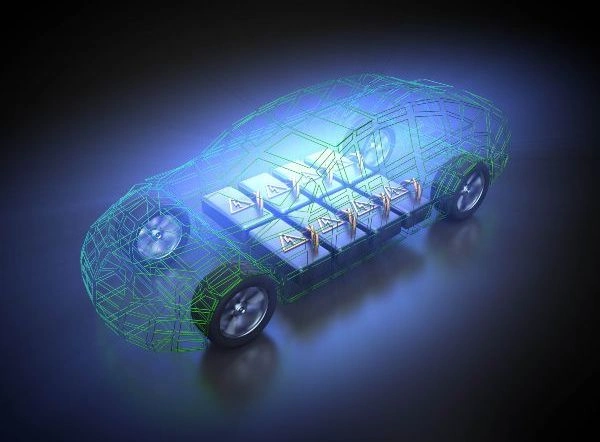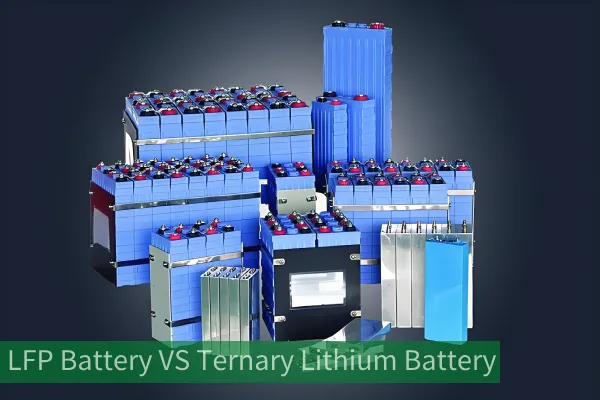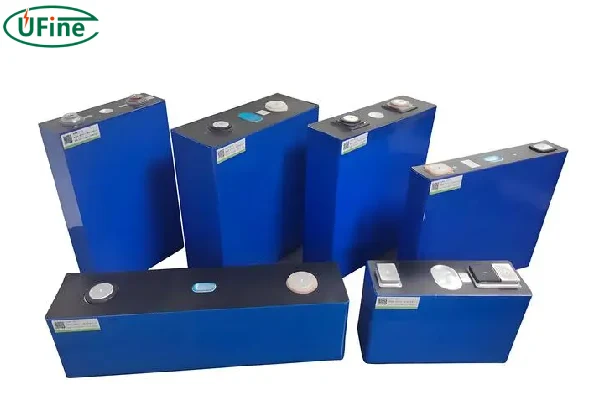
With the popularity of electric vehicles (EVs), more and more consumers are paying attention to EV battery types. Ternary lithium batteries and lithium iron phosphate batteries (LFP batteries) are two common battery types currently on the market. They each have their advantages and disadvantages, so how should you choose when buying an electric vehicle?
This article will provide a professional analysis to help you choose the suitable battery type.
We will compare ternary batteries and lithium iron phosphate batteries (LFP batteries) in terms of battery materials, battery performance, safety, and cost and provide you with selection suggestions based on factors such as usage scenarios, budget, and performance requirements.
Part 1. LFP battery for EVs
LFP battery is a lithium-ion battery that uses lithium iron phosphate as the cathode material. Its advantages include high safety, long cycle life, and low cost. Lithium iron phosphate batteries have a stable structure during charging and discharging. They are not prone to safety problems such as short circuits and fires.
In addition, the LFP battery has a longer service life and can withstand more charge and discharge cycles. Although the energy density of LFP batteries is relatively low, it is still one of the important battery technologies in electric vehicles, energy storage systems, and other fields.
Part 2. Ternary lithium battery for EVs
The ternary lithium battery is a lithium-ion battery using lithium nickel cobalt manganate as the positive electrode material. It has the advantages of high energy density, fast charging speed, and good low-temperature performance. It is widely used in electric vehicles, electronic products, and other fields.
The cost of ternary lithium batteries is relatively high, but their performance and energy density are high, which can meet the needs of some consumers with higher battery performance requirements. At the same time, the safety and stability of ternary lithium batteries are slightly worse than LiFePO4 batteries, and more attention needs to be paid to safety issues during use and maintenance.
Part 3. LFP battery VS ternary lithium battery
1. Electrode material
LFP batteries and ternary batteries are two common lithium-ion batteries. Their main difference lies in the different cathode materials.
- LFP battery: The positive electrode material of lithium iron phosphate battery is lithium iron phosphate.
- Ternary lithium battery: The positive electrode material of ternary lithium batteries is lithium nickel cobalt manganate or aluminate.
2. Battery performance
- LFP battery: The energy density of the LFP battery is relatively low, but its safety and stability are better, and it can withstand more charge and discharge cycles.
- Ternary lithium battery: The energy density of ternary batteries is relatively high and can provide a longer cruising range. The charging speed of ternary lithium batteries is also relatively fast and can be fully charged faster.
3. Safety
- LFP battery: The cathode material of lithium iron phosphate batteries is lithium iron phosphate. This material has a stable structure during the charge and discharge process. It is not prone to safety problems such as short circuits and fires. In addition, the LFP battery can maintain good safety under conditions such as overcharging, over-discharging, and short circuits.
- Ternary lithium battery: The cathode material of ternary lithium batteries is lithium nickel cobalt manganate or lithium nickel cobalt aluminate. This material is prone to thermal runaway during charging and discharging, leading to safety issues such as short circuits and fires. In addition, ternary lithium batteries are also prone to safety problems when overcharged, over-discharged, short-circuited, etc.
4. Cost
- LFP battery: The positive electrode material of the LiFePO4 battery is lithium iron phosphate. This material is relatively cheap, and the production process is simple. Therefore, the cost of lithium iron phosphate batteries is relatively low.
- Ternary lithium battery: T The cathode material of ternary lithium batteries is lithium nickel cobalt manganate or lithium nickel cobalt aluminate. This material is relatively expensive, and the production process is complex. Therefore, the cost of ternary lithium batteries is relatively high.
The following table format can be used for a more intuitive comparison.
Lithium Iron Phosphate Battery Vs Ternary Lithium Battery Chart
| Comparison Item | Ternary Lithium Battery | LFP Battery |
|---|---|---|
| Energy Density | Higher energy density, allowing for longer driving range | Lower energy density compared to ternary |
| Price | Generally more expensive than LFP batteries | More affordable compared to ternary batteries |
| Cycle Life | Shorter cycle life, typically 500-1000 cycles | Longer cycle life, up to 2000-3000 cycles |
| Safety | Lower thermal stability, higher risk of fire/explosion | Inherently safer with lower risk of thermal runaway |
| Cold Resistance | Performance degrades more in cold temperatures | Better performance in cold conditions |
| Charging Speed | Capable of faster charging, up to 80% in 30 minutes | Slower charging, typically around 1-2 hours for 80% |
| Environmental Impact | Higher environmental impact due to the use of rare earth metals | Lower environmental impact, more sustainable materials |
| Power Density | Higher power density, better for high-performance EVs | Lower power density, more suitable for standard passenger EVs |
| Maintenance | Requires more complex battery management systems | Simpler battery management system, lower maintenance |
| Application Scenarios | Preferred for high-performance, long-range EVs | Suitable for mainstream, city/commuter EVs |
Part 4. Why choose LFP batteries for EVs?
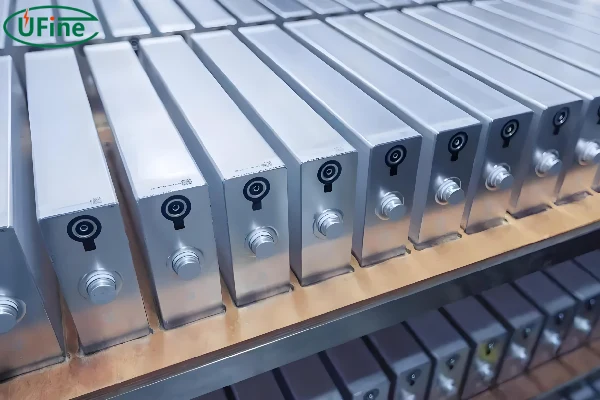
1. High safety
LFP batteries are lithium-ion battery that uses lithium iron phosphate as the cathode material. It has the advantages of high safety, long cycle life, and low cost. Therefore, it is widely used in electric vehicles and other fields.
The high safety of lithium iron phosphate batteries is mainly reflected in their good thermal stability and resistance to thermal runaway. Compared with other lithium-ion batteries, lithium iron phosphate batteries have better stability at high temperatures and can effectively avoid battery short circuits, fires, and other safety issues.
2. Long life
Lithium iron phosphate is a lithium-ion battery that uses lithium iron phosphate as the positive electrode material. Compared with other lithium-ion batteries, it has a longer service life. It is therefore widely used in electric vehicles and other fields.
LiFePO4 battery has more charge and discharge cycles, generally 2,000 times; some even reach more than 4,000 times. Able to withstand more charge and discharge cycles and have a longer service life. This means that the electric vehicle can maintain good performance and cruising range for a longer period, reducing the frequency and cost of battery replacement.
3. Low cost
LFP batteries are lithium-ion battery using lithium iron phosphate as the positive electrode material. It has the advantages of low cost and high safety, so it is widely used in electric vehicles and other fields.
The production cost of lithium iron phosphate batteries is relatively low. The cathode material of lithium iron phosphate batteries is mainly composed of iron phosphate and lithium salt. The prices of these materials are relatively low, so the production cost of lithium iron phosphate batteries is relatively low.
The battery is the core component of an electric vehicle. Its production cost accounts for 40% of the total cost of an electric vehicle. Therefore, an electric vehicle equipped with LFP batteries is much cheaper than an electric vehicle using a ternary lithium battery.
Part 5. Why choose ternary lithium batteries for EVs?
1. High energy density
The energy density of ternary lithium batteries is relatively high, generally between 150-200Wh/kg. This means that ternary lithium batteries can store more electrical energy under the same volume or weight. Therefore, it can provide longer recharge mileage.
The energy density of lithium iron phosphate batteries is relatively low, generally between 100-150Wh/kg. Although the energy density of lithium iron phosphate batteries is low, they have other advantages, such as high safety and long cycle life.
2. Better cold resistance
An important advantage of ternary lithium batteries is their good cold resistance. In low-temperature environments, ternary lithium batteries’ discharge performance and capacity retention rate are relatively good, allowing electric vehicles to maintain good cruising range and performance in cold winters.
In contrast, lithium iron phosphate batteries’ discharge performance and capacity retention rate will significantly decrease in low-temperature environments. This will shorten the cruising range of electric vehicles in winter and affect the use experience.
3. Charging speed is faster
Another important feature of ternary lithium batteries is their fast charging speed. Compared with other types of lithium-ion batteries, ternary lithium batteries can be fully charged in a shorter time, thus shortening the charging time of electric vehicles and improving usage efficiency.
This is because the cathode material of the ternary lithium battery contains elements such as nickel, cobalt, and manganese. These elements can improve the conductivity and electrochemical activity of the battery, thereby speeding up the charging speed of the battery.
In addition, the charging speed of ternary lithium batteries is also affected by the charger power and charging method. Suppose a high-power charger is used and a suitable charging method is adopted. In that case, the charging speed of the ternary lithium battery can be further improved.
Part 6. How to choose?
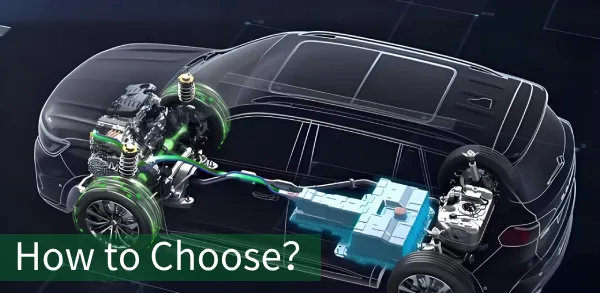
As one of the core components of electric vehicles, the performance and service life of batteries directly affect the use experience and cost of electric vehicles. When choosing an electric vehicle, how to choose the battery type that suits you can consider the following aspects.
1. Usage scenarios
The usage scenario is one of the important factors in choosing a battery type. Suppose you need to travel long distances frequently. In that case, it may be more appropriate to choose a ternary lithium battery with higher energy density because it can provide a longer driving range. Suppose you mainly use your electric car in the city. In that case, it may be more appropriate to choose the LFP battery because it is safer and has enough cruising range in the city to meet your daily needs.
2. Price
Battery type is also one of the important factors affecting the price of electric vehicles. The cost of ternary lithium batteries is relatively high. Therefore, the price of electric vehicles using ternary lithium batteries is relatively high. If your budget is limited, you can choose an electric vehicle with an LFP battery, reducing the cost of car purchases to a certain extent.
3. Performance requirements
Suppose you have higher requirements for the performance of electric vehicles, such as acceleration performance, charging speed, etc. Then, it may be more appropriate to choose a ternary lithium battery. Ternary lithium batteries have higher energy density and can provide better acceleration performance and faster charging speed. If your performance requirements are not very high, choosing an LFP battery can also meet your daily needs.
Part 7. Summary
- LFP battery has high safety, long cycle life, and low cost. However, the disadvantages are low energy density and poor cold resistance. Ternary lithium batteries have high energy density, fast charging speed, and good cold resistance. But the disadvantages are high cost and relatively poor safety.
- If you often travel long distances, you can choose ternary lithium batteries with higher energy density. If you mainly use electric vehicles in cities, you can choose LFP batteries.
- If you have a limited budget, choose lithium iron phosphate batteries. If you have enough budget, you can choose according to your needs.
- For high-performance requirements, choose ternary lithium batteries; for low-performance requirements, choose lithium iron phosphate batteries.
When choosing an electric vehicle, you can choose the battery type that suits you based on usage scenarios, budget, and performance requirements. At the same time, learning more about the characteristics, advantages, and disadvantages of different battery types is recommended to make a more informed choice.
Part 8. FAQs
-
What is the voltage of a ternary lithium battery?
The voltage of a ternary lithium battery typically ranges from 3.6 to 3.7 volts per cell, depending on the specific chemistry and charge level. -
Are ternary lithium batteries safe? Will it explode?
Ternary lithium batteries are generally safe when used properly and under appropriate conditions. However, if mishandled or subjected to extreme conditions, there is a risk of thermal runaway and the potential for explosion or fire. -
What is the cycle life of a ternary lithium battery?
The cycle life of a ternary lithium battery can vary depending on factors such as depth of discharge, charging/discharging rates, and operating conditions. They can endure hundreds to a few thousand charge/discharge cycles on average. -
How to charge a ternary lithium battery correctly?
To correctly charge a ternary lithium battery, it is essential to use a charger specifically designed for this battery type. Follow the manufacturer’s charging voltage, current, and timing guidelines to ensure safe and optimal charging. -
How to distinguish ternary lithium batteries and LFP batteries?
Ternary lithium and LiFePO4 (LFP) batteries can be distinguished by their respective cathode chemistries. Ternary lithium batteries use a cathode material composed of lithium, nickel, cobalt, and manganese. In contrast, LFP batteries use a cathode material composed of lithium, iron, and phosphate.
Related Tags:
More Articles
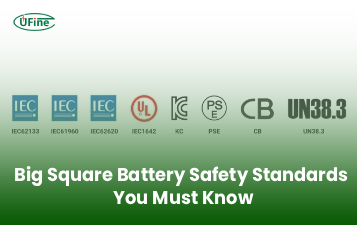
Big Square Battery Safety Standards You Must Know
Learn key safety standards for big square batteries to avoid fire risks, shipping delays, and compliance issues in EV, industrial, and energy storage projects.
Big Square Battery Applications in Solar & Industrial Equipment
Big square batteries deliver high capacity, stable output, and long life for solar, industrial, and backup power. Explore key uses and advantages.
Big Square Battery vs Cylindrical Battery: Complete 2025 Guide for EVs, ESS & Industrial Devices
Choosing the right battery is key for designers and engineers. Compare big square vs cylindrical batteries to find the best fit for your application.
How to Choose the Right Big Square Battery for Your Device?
If you’re choosing a big square battery for EVs, solar, or mobility devices, this guide helps you pick the right solution for real-world needs.
Big Square Battery Complete Guide: Types, Uses & Buying Tips
If you are choosing a big square lithium battery for EVs, solar, RVs, or AGVs, this guide helps you select the right NMC, LFP, or LTO solution with examples.
